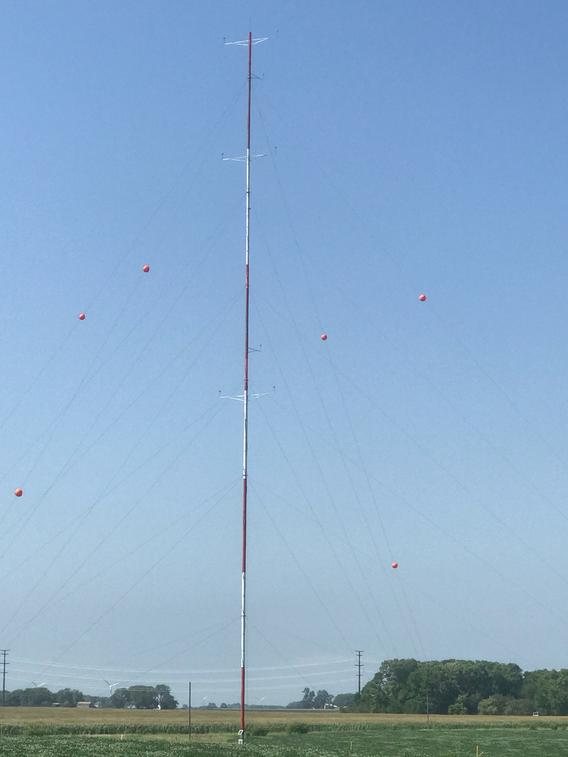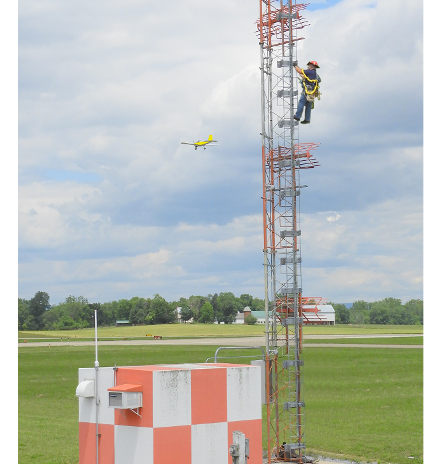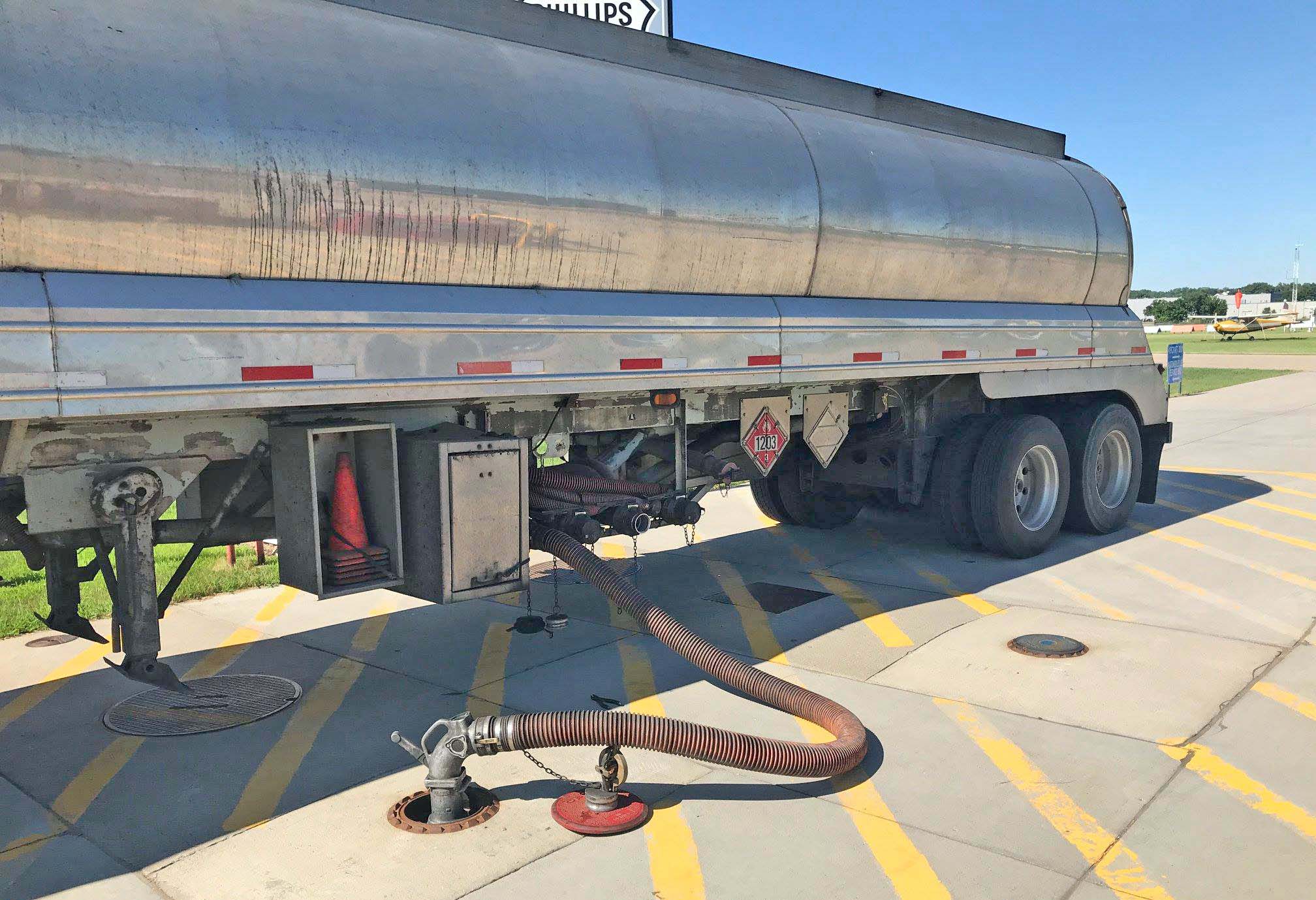
With growing interest in wind energy, wind turbine companies are studying various locations across the country—including Minnesota—for their feasibility as wind farm locations, using meteorological evaluation towers (MET) to evaluate wind speed and direction.
The towers, typically 50–200 feet in height and 6–12 inches in diameter, lack lighting or other markings. Because they’re tall and thin, they’re often difficult for low-flying aircraft to see. This presents a safety issue, especially for aircraft conducting agriculture operations and medical services.
METs fall outside MnDOT and FAA current regulations, which govern structures over 200 feet tall. To address this safety concern, the Minnesota Legislature passed a law in May pertaining to meteorological towers between 50 and 200 feet tall. The bill requires tower owners to mark and light them in a specified way. MnDOT’s Office of Aeronautics must also be notified at least 30 days prior to erection of a new tower. Existing meteorological towers must provide notification of their location by May 28, 2021. The notification process for both also requires a one-time $50 recording fee. Tower owners and representatives can submit their tower notification online at mndot.gov/aero/meteorological-towers. This website will also track tower locations and provide information on heights.
For more information, contact Cedric Williams, MnDOT Aeronautics, [email protected], or visit dot.state.mn.us/aero/meteorological-towers/index.html
To read MN Statute 360.915, see revisor.mn.gov/laws/2020/0/100/laws.0.21.0#laws.0.21.0


